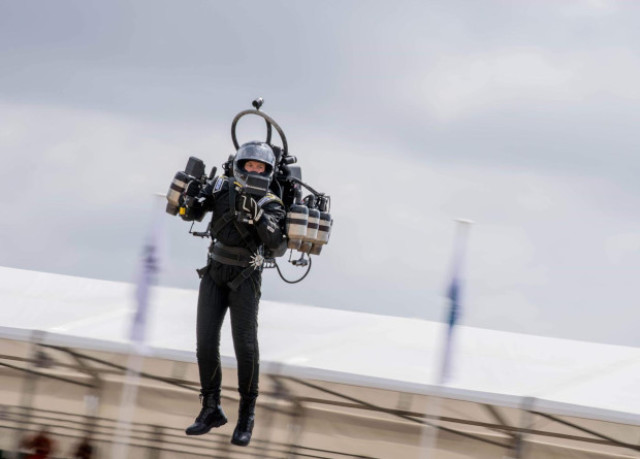Defense Advanced Development Agency (DARPA) The United States has announced its intention to evaluate the practical use of jetpacks and other compact individual vehicles. According to Flightglobal, in early March of this year, the agency announced a tender for the development of concepts and projects of jetpacks, thanks to which the military intends to determine how such devices could be used in the military.
The jetpack is an individual compact vehicle consisting of several small jet engines. With its help, a person without any additional devices is able to fly for relatively short distances at low speed. Usually the duration of the flight of jetpacks is about 10 minutes, and the speed is 200 kilometers per hour.
According to DARPA requirements, the new individual vehicles must be light enough and compact enough to be carried by a single person. Within the framework of the project, which received the designation PPAMS (Portable Personal Mobility System, portable individual flying system), the military is interested in jetpacks, as well as motorized gliders, wingsuits and paragliders. The engines of all these devices can be internal combustion or electric.
At the same time, DARPA experts admit that promising military individual aircraft can be both disposable and reusable. In the latter case, the maintenance and refueling of such systems should be as simple as possible, so that one person can handle them. In addition, the preparation of the vehicle for flight should also be handled by one person, and starting the engines should not require additional devices.
The assembly and preparation of a jetpack or other aircraft should not take more than ten minutes. The range of such a vehicle must be at least five kilometers, and the jetpack itself must be suitable for flights at low and medium altitudes. At the same time, the vehicle must be suitable for take-offs both from the ground and from air vehicles, including helicopters and tiltrotors.
Other requirements include low visibility, including in the infrared range,and low noise. As part of the tender, DARPA intends to test both individual technologies of individual vehicles and the assembled aircraft themselves. Based on the results of the tender, the military will assess how useful jetpacks can be in the troops, and possibly decide on their serial delivery to the troops, including special operations units.
Currently, the only American military unit that has ordered the delivery of jetpacks is the Special Operations Forces. Their command in 2016 signed a contract with JetPack Aviation for the development and delivery of JB-11 jetpacks. These devices are equipped with six jet engines, capable of flying at speeds of up to 200 kilometers per hour and stay in the air for up to 10 minutes.
Vasily Sychev

